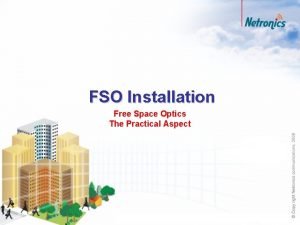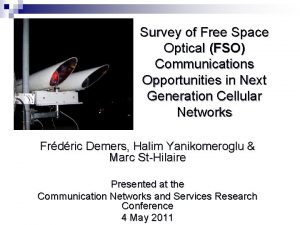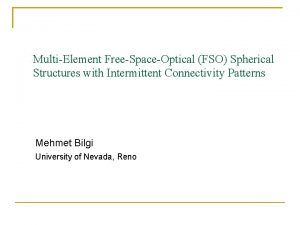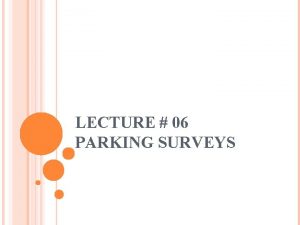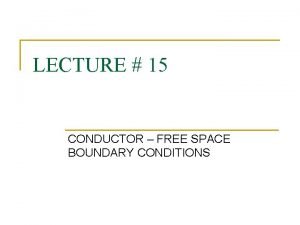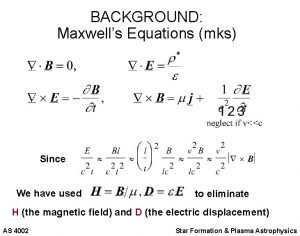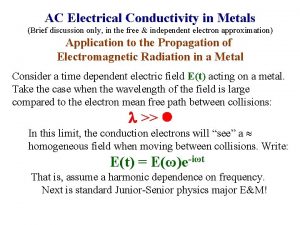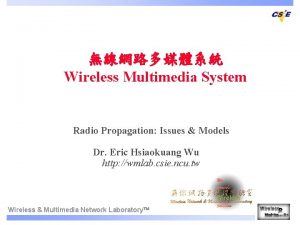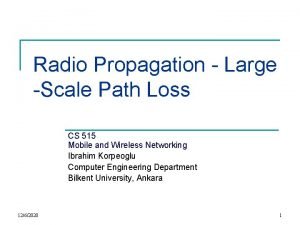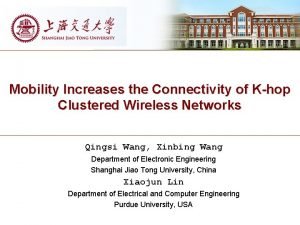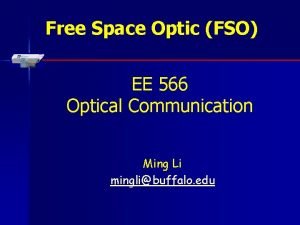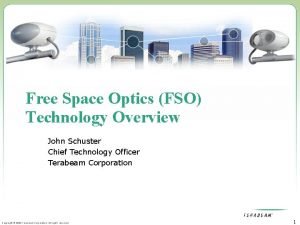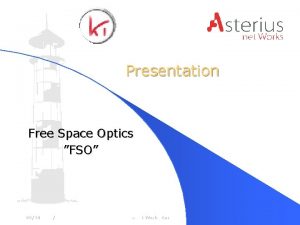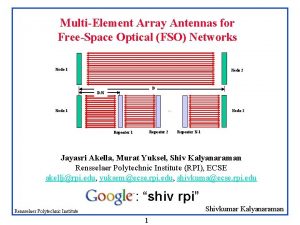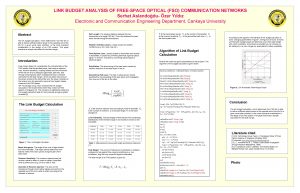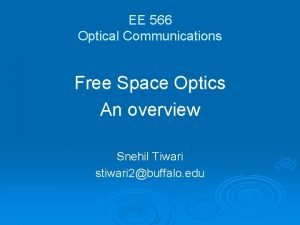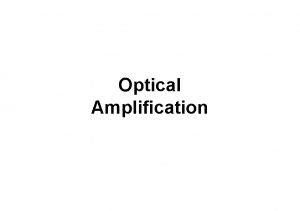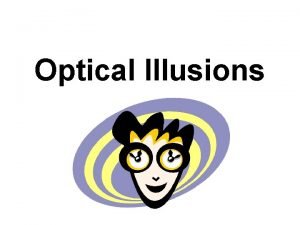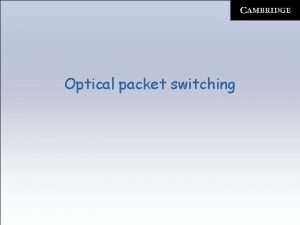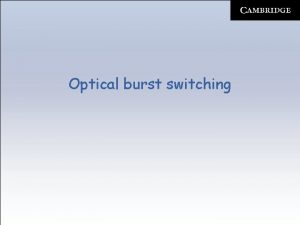Survey of Free Space Optical FSO Communications Opportunities



















- Slides: 19

Survey of Free Space Optical (FSO) Communications Opportunities in Next Generation Cellular Networks Frédéric Demers, Halim Yanikomeroglu & Marc St-Hilaire Presented at the Communication Networks and Services Research Conference 4 May 2011

Outline n Motivation & Key Characteristics of FSO systems n Channel model and path loss overview n Recent advances in FSO communications ¨ ¨ Full Optical FSO systems Hybrid RF/FSO systems Mobile FSO systems Indoor diffuse FSO systems n Applications within Next Generation Cellular Networks n Conclusions 2

Motivation & key characteristics n n n RF spectrum scarcity vs increasing throughput requirements A single FSO channel can offers Tb/s throughput wirelessly Free space optical spectrum is license free and nearly unlimited (very dense reuse) FSO systems are generally very difficult to intercept Effective range limited by weather and eyesafety considerations 3

Channel model n Factors affecting light propagation through the atmosphere ¨ Physical composition of atmosphere ¨Changes in refractive indices ¨Aerosol particles 4

Channel model 850 nm 1550 nm 5

Channel model n Channel effects: ¨ Absorption ¨ Diffraction ¨ Rayleigh scattering (atmospheric gases molecules) ¨ Mie scattering (aerosol particles) ¨ Atmospheric (refractive) turbulence: Weather Scintillation n Beam wander n 6

Channel model 7

Path loss, RF n Typical RF attenuation (e. g. 2 GHz, 15 d. Bi antenna gains) Avg path loss in free space -> 68 d. B @ 1 km , 118 d. B @ 10 km ¨ Avg path loss in mobile radio (n=3. 4, d 0=100 m) -> 82 d. B/km, 146 d. B @ 10 km ¨ 8

Path loss, FSO Intensity of light at point x and time t’ Beer-Lambert Law Intensity of transmitter Space time distribution of species Mie Scattering Absorption Raleigh Scattering M. Bass, "Atmospheric optics, " in Handbook of Optics , Third Edition ed. , vol. 5, M. Bass, Ed. Mc. Graw-Hill, pp. 3. 3. , 2010. 9

Pressure Path loss, FSO Refractive index of air Temperature Point in space Humidity Stochastic component 10

Path loss, RF vs FSO n Typical RF attenuation (e. g. 2 GHz, 15 d. Bi antenna gains) Avg path loss in free space -> 68 d. B @ 1 km , 118 d. B @ 10 km ¨ Avg path loss in mobile radio (n=3. 4, d 0=100 m) -> 82 d. B/km, 146 d. B @ 10 km ¨ n Typical optical attenuation (e. g. 1550 nm or 194 THz) ¨ clear atmospheric conditions -> 0. 2 d. B/km ¨ urban (because of dust) -> 10 d. B/km ¨ Rain -> 2 -35 d. B/km ¨ Snow -> 10 -100 d. B/km ¨ light fog -> 120 d. B/km ¨ dense fog -> 300 d. B/km ¨ maritime fog -> 480 d. B/km 11

Full Optical FSO n No requirement for electrical-optical conversion n Easy extension of RF-over-fibre links n Wavelength division multiplexing K. Kazaura, K. Wakamori, M. Matsumoto, T. Higashino, K. Tsukamoto and S. Komaki, "Ro. FSO: A universal platform for convergence of fiber and free-space optical communication networks, " Communications Magazine, IEEE, vol. 48, pp. 130 -137, 2010. 12

Hybrid RF/FSO l FSO is most affected by fog, RF by rain l RF links complements FSO to achieve carrier class availability (99. 999%) l Lower throughput in adverse weather I. I. Kim and E. Korevaar, "Availability of free space optics (FSO) and hybrid FSO/RF systems, " Optical Wireless Communications IV, EJ Korevaar, Eds. , Proc. SPIE, vol. 4530, pp. 84 -95, 2001. 13

Mobile FSO Systems l Tightly packed LED transceivers around spherical device l Able to maintain optical link in motion l Experiment rather simplistic J. Akella, C. Liu, D. Partyka, M. Yuksel, S. Kalyanaraman and P. Dutta, "Building blocks for mobile free-space-optical networks, " in Wireless and Optical Communications Networks, 2005. WOCN 2005. Second IFIP International Conference on, pp. 164 -168, 2005. 14

Indoor Diffuse Optical Wireless l Non Line-of-Sight optical communications l Multipath interference an issue, limiting throughput l Hybrid narrow-beam designs provide both bandwidth and coverage R. J. Green, H. Joshi, M. D. Higgins and M. S. Leeson, "Recent developments in indoor optical wireless systems, " IET Communications, vol. 2, pp. 3, 2008 15

Next Generation Cellular Networks n Densification of access points (e. Node. B) ¨ Shorter hops ¨ Suitability to mesh connectivity n Heterogeneous access points ¨ Relaying ¨ Distributed antennas ¨ Coordinated Multi-Point Transmission & Reception (Co. MP) n Self-Organizing Networks

Next Generation Cellular Networks Evolved UMTS Terrestrial Access Network (E-UTRAN) Evolved Packet Core a. GW e. NB UE p-e. NB MME p-e. NB SAE GW a. GW Indoor AP relay e. NB relay UE PDN GW 17

Conclusions Radio Next frequencies generation networks alone will not require suffice atodenser provide These This architectural denser infrastructure changes will open shorten the door hops to an infrastructure thebetween required throughput to cater to. FSO mobile toand the end-users userthe needs increased reliance base upon stations communication ease PHY layer not dead! establishment systems ofismesh connectivity 18

Main references 1. J. Akella, C. Liu, D. Partyka, M. Yuksel, S. Kalyanaraman and P. Dutta, "Building blocks for mobile free-space-optical networks, " in Wireless and Optical Communications Networks, 2005. WOCN 2005. Second IFIP International Conference on, 2005, pp. 164 -168. Available: http: //citeseerx. ist. psu. edu/viewdoc/download? doi=10. 1. 1. 143. 6352&rep=rep 1&type=pdf 2. M. Bass, "Atmospheric optics, " in Handbook of Optics , Third Edition ed. , vol. 5, M. Bass, Ed. Mc. Graw-Hill, 2010, pp. 3. 3. R. J. Green, H. Joshi, M. D. Higgins and M. S. Leeson, "Recent developments in indoor optical wireless systems, " IET Communications, vol. 2, pp. 3, 2008. Available: http: //www. ieeexplore. ieee. org. proxy. library. carleton. ca/stamp. jsp? tp=&arnumber=4446 618 4. K. Kazaura, K. Wakamori, M. Matsumoto, T. Higashino, K. Tsukamoto and S. Komaki, "Ro. FSO: A universal platform for convergence of fiber and free-space optical communication networks, " Communications Magazine, IEEE, vol. 48, pp. 130 -137, 2010. Available: http: //www. ieeexplore. ieee. org. proxy. library. carleton. ca/stamp. jsp? tp=&arnumber=5402 676 5. I. I. Kim and E. Korevaar, "Availability of free space optics (FSO) and hybrid FSO/RF systems, " Optical Wireless Communications IV, EJ Korevaar, Eds. , Proc. SPIE, vol. 4530, pp. 84 -95, 2001. Available: http: //www. ece. mcmaster. ca/~hranilovic/woc/resources/local/spie 2001 b. pdf 19
 Fso installation
Fso installation Defense security service audit
Defense security service audit Free space optics
Free space optics B position
B position 叫叫abcd
叫叫abcd Parking survey questions
Parking survey questions Dialogue about free time
Dialogue about free time Unscented trajectory chapter 5
Unscented trajectory chapter 5 Space junk the space age began
Space junk the space age began Camera space to world space
Camera space to world space Cartesian space vs joint space
Cartesian space vs joint space World space computer
World space computer Freeway space
Freeway space Conditions for free space
Conditions for free space Permeability of free space units
Permeability of free space units Conductivity of free space
Conductivity of free space Free space propagation model in wireless communication
Free space propagation model in wireless communication Friis free space propagation model
Friis free space propagation model Free space propagation model in wireless communication
Free space propagation model in wireless communication Free vector space over a set
Free vector space over a set
